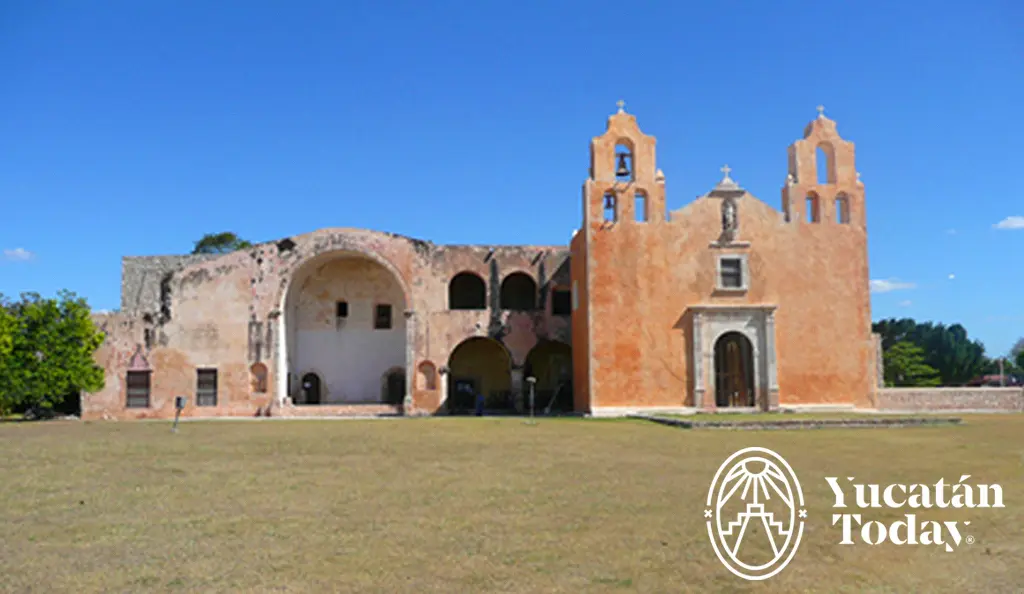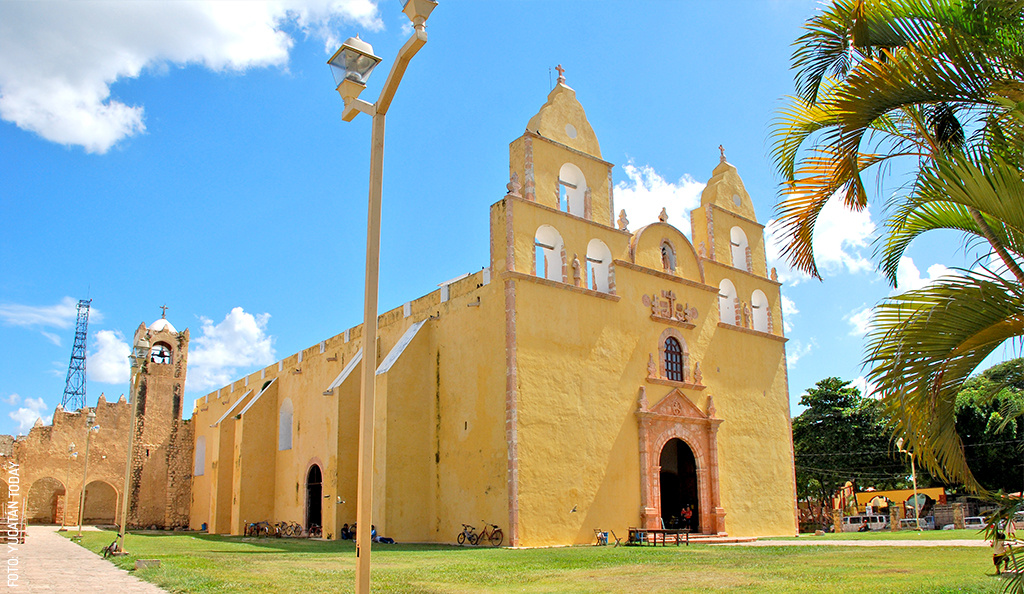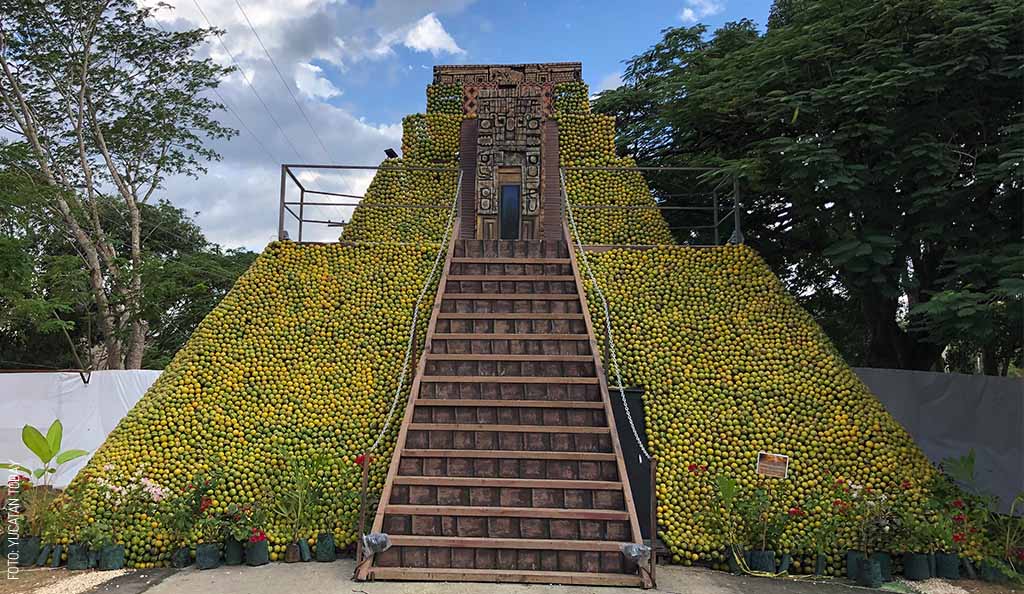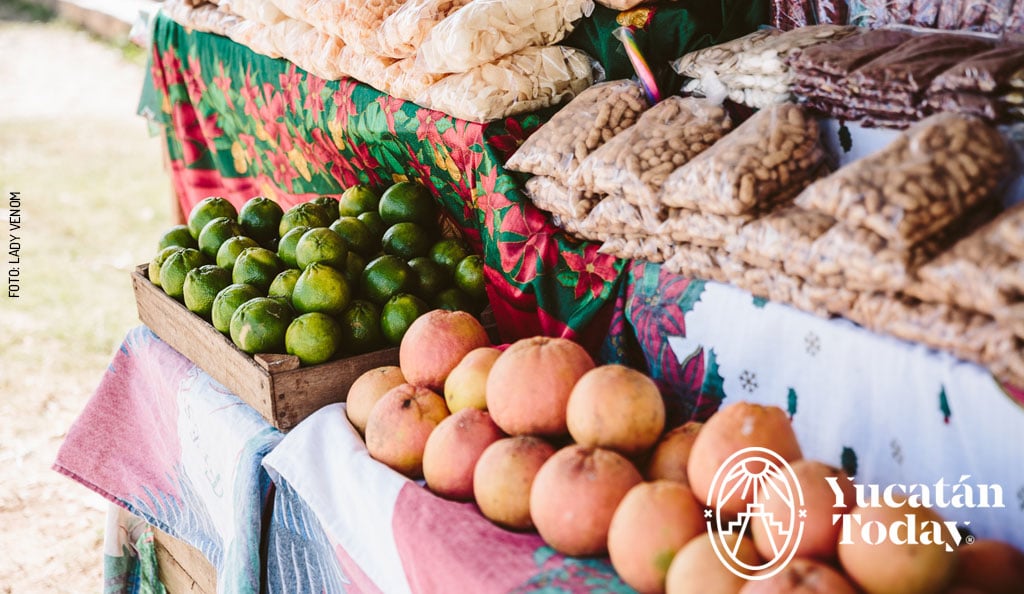
Cinco Razones para Visitar Maní
Maní es una ciudad pequeña ubicada al sur del estado, muy cercana a Ticul. El 1 de diciembre del 2020 fue nombrado como Pueblo Mágico de México. Es famosa por ser el epicentro de la llamada Ruta de los Conventos, en la que se pueden conocer las iglesias y conventos más representativos de Yucatán. Destaca por contar con una de las capillas abiertas más impresionantes de América Latina, un convento que te transporta a los tiempos de los frailes, así como haber sido testigo de pasajes importantes de la historia de la conquista en la Península. Te presentamos cinco maneras de conocer más:

Iglesia y Convento de San Miguel Arcángel
Este convento que data aproximadamente de 1549, fue sede de una de las primeras escuelas de evangelización y uno de los primeros hospitales en América. En el exterior se aprecia una estatua de piedra del Arcángel San Miguel, santo al que está dedicado el templo. Al igual que otros edificios construidos en la época, se usaron piedras de edificios mayas para su construcción. En su interior destacan sus largos corredores, muros sencillos y austeros, así como un espléndido altar de tipo sacro bañado en oro. Durante sus más de cuatro siglos de existencia ha sido restaurado en varias ocasiones, lo que ha permitido que pueda ser apreciado hasta hoy. Actualmente sigue funcionando como un lugar de culto católico para misas y celebraciones. El horario de visitas depende de los servicios religiosos.
Una de las más grandes capillas abiertas en Latinoamérica
Majestuosa e imponente, se encuentra ubicada a un costado de la iglesia y convento de San Miguel. ¿Te imaginas estar ante un edificio de más de cuatro siglos que funcionaba como centro de reunión, un lugar que ha perdurado desde tiempos coloniales y que hoy puedes conocer? Pues este es el escenario perfecto para que hagas algunas fotos de recuerdo, fíjate en los detalles de los muros, y por supuesto, una panorámica de postal.
El “Auto de fe” realizado por Fray Diego de Landa en esta ciudad
En Maní se vivió uno de los momentos más trágicos en la historia de los mayas, la quema de códices con explicaciones de historia y astronomía, así como de ídolos y símbolos religiosos. Este hecho conocido como “Auto (o Acto) de fé”, lo encabezó el franciscano Fray Diego de Landa como parte de las acciones para lograr la conversión del pueblo maya a las prácticas católicas. Se dice que tiempo después, se arrepintió y se dedicó al estudio de la cultura maya y de esta forma poder rescatar una parte de la historia de los mayas, modo de vida y creencias religiosas.
Un pintoresco centro lleno de historias y leyendas
Caminando por sus calles te puedes encontrar edificios con fachadas únicas, plazas, capillas (Santa Lucía y Santiago). Si tienes suerte puedes encontrarte jóvenes oriundos de Maní dispuestos a contarte algunas leyendas relacionadas con el cenote Xcabach’e’en, ubicado dentro de unas grutas, y el reinado de los Xiú en estas tierras.
El Poc Chuc, plato estrella de la gastronomía yucateca
Maní es famoso por el sabor que encontrarás en el restaurante Principe Tutul Xiú, de gran tradición y una parada obligada para visitantes. Es un lugar muy típico con platos regionales, tortillas hechas a mano, frijol colado, cebolla morada con chile habanero y aguas fresca de la región. Toda una delicia que bien vale la pena disfrutar.
¿Estás listo para visitar Maní?
¿Cómo llegar?
En auto: Tomando la salida de Mérida hacia Cancún (oriente), sigue hasta la salida a Chetumal / Acanceh. Maneja 92 km pasando Acanceh, Tecoh, Tekit y Teabo.
En autobús: Terminal Noreste con salidas durante el día.

Autor: Violeta H. Cantarell
Nacida en Mérida, Violeta es una comunicóloga dedicada a escribir y crear contenidos en temas de turismo, moda y emprendimiento. Recientemente incursionó como traductora inglés-español.
¡Recibe en tu correo los últimos artículos y mucho más de lo mejor de Yucatán!
Artículos relacionados

Oxkutzcab
Situado en el sur del estado, a 100 km de Mérida, en el “cinturón cítrico del estado”, se encuentra Oxkutzcab, mejor conocido como la huerta del...
El sur de Yucatán, referente en la producción de cítricos
Toda la magia ocurre en el sur, en el área denominada como “subregión sur frutícola” conformada por los municipios de Akil, Dzan, Maní, Oxkutzcab y...




